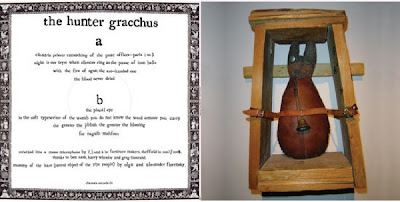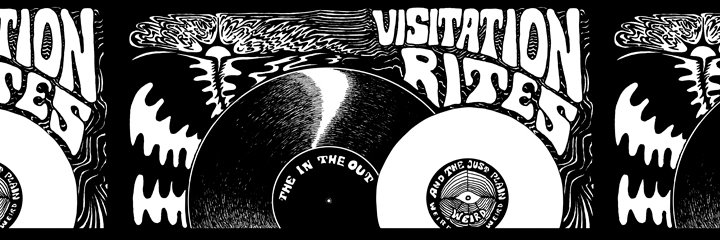
Sacred Object of the Yiye People, the debut LP from England’s The Hunter Gracchus, is a cacophony of improvisation, acoustic noise, and obscure literary and cultural references. The odd charm of the album emerges through an interplay between unconventional rhythm and hypnotic melody. Sacred Object's Bedouin influences stand out in a number of the tracks and make it traveling, richly textured, and entirely enthralling.
The album is constructed like a journey, with “elkadria priests’ ransacking of the PNAC offices—parts 1 to 3” and “for naguib mahfouz” neatly bookending the work as the departure and the arrival. In “night is our tryst when silences ring as the pause of bells,” sounds float in and out of earshot, finally culminating in a duet between accordion and drums filled with the drudgery of movement. The second half of side a, featuring “with the fire of ogun, the axe-handed one” and “the blood never dried”, is jarringly dissonant. Heavy-handed percussion overpowers the initially delicate tones, and we hear the only traditional instrumentation of the album: slightly distorted guitar riffs and the rhythm of a steam locomotive.
Side b is more melodic, but not by much. Starting with “the pineal eye,” a sawing violin becomes an ambient metronome, and short gasps of accordion and percussion punctuate the melody. The drums are still there, but they become a melodic undertone, not like the pronounced rhythms of side a. Their musical influences are as much Bedouin street jams as contemporary noise and dream folk.
Some tracks open with the first notes of a carnivalesque accordion, only to become a repeated melody of four notes. These beginnings are like biting into a street hotdog: the bun feels artificial and misplaced, a barrier you have to get through to get to the meat inside. Once you’re in, the sound mirage is intoxicating and the improvisation becomes organic psychedelia.
After the initial opening, the listener must wait for rhythmic meditation to begin, and it’s not always evident in what direction a song is going. One exception to these misdirected openings is "naguib mahfouz,” the album’s closing track, in which ethereal voices, coupled with Hunter Gracchus’s signature heavy violin, create an interplay of surprising intensity. This is a song that I could be born / die / be buried to; it washes over you in layers and waves, evoking the water themes in The Hunter Gracchus, the Franz Kafka story from which the band takes its name.
Organically and acoustically, The Hunter Gracchus breaks musical sound into noises that don't seem to be coming from the instruments that produce them: a rhythmic clatter turns to stretched rubber; a squeak, combined with light rhythms, becomes the call of a caged chicken on a cinematic caravan of Bedouin traveling.
Many of their song titles contain clues to the band’s influences. These references range from populist political bravado ("elkadria priests’ ransacking of the PNAC offices” and "the blood never dried" speak to the ex-subjects of the British Empire) to Arabic and Bedouin culture and literature (“with the fire of ogun, the axe-handed one” and “the greater the jibbah, the greater the blessing”). The cover art and album title are taken from artists Olga and Alexander Florensky's creation of a fictitious people, and of the ethnographer who studies them.
One problem with Sacred Object is that few of these references seem to lead anywhere; they add context but not dimension. Perhaps this is the lot of 21stcentury music: to draw connections where there are none, in deference to the dream of universal knowledge. While the disconnect between the alien music and abstruse literary and cultural references in the titles may make The Hunter Gracchus seem like a pretentious scenester band, their music is genuinely good.
Words: Nicholas Wells

Like what we're doing here? Just a little pocket change gives Visitation Rites food to live on.




